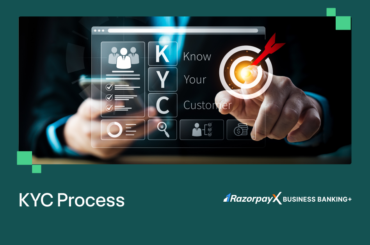The value of all digital payment transactions made in India in January 2023 alone was a whopping Rs 12.98 lakh crore. This is undeniable proof that our preferred mode of making and receiving payments is changing.
Digital wallets are an important part of this online payments ecosystem. While everyone is familiar with the term digital wallet, it’s important to know how it actually works and which digital wallet works best for you.
India’s preferred mode of banking is digital. Has your business caught up?
Table of Contents
What is a Digital Wallet?
A digital wallet is a financial application that stores payment information and enables online payments. They are accessible from any device connected to the internet – computers, mobile phones.
The most popular use of digital wallets is while shopping – they offer a convenient, seamless way to pay. With a digital wallet, you don’t have to keep entering credit or debit card information or carry around your wallet every time you go to the mall. Your mobile phone is all you need!
How Does a Digital Wallet Work?
A digital wallet stores your payment information and password, allowing you to securely sign in and make payments from your device.
In order to do this, you have to add your bank account or debit card details to your digital wallet and add money to the digital wallet to make payments. Some digital wallets for consumers are PayTM, ICICI Pockets.
The card and bank account details stored on your digital wallet allow it to transfer payments. Various payment processors, gateways, credit card networks and third parties are involved in routing money from your device to the receiver.
Digital wallets use the following technologies to transfer funds from one user to another:
- Near Field Communication (NFC)
This technology establishes a connection between two smart devices and transfers information using electromagnetic signals. Here, two devices must remain close to each other.
- Magnetic Secure Transmission (MST)
A magnetic signal gets generated once you swipe the magnetic stripe on a credit card. Without upgrading any equipment, customers can carry out their transactions securely via MST.
- QR Codes
These are matrix bar codes that you can scan at the time of transaction using your smartphone’s camera.
Related Read: What is NFC? Features, Components, How Does It Work with Examples
Choosing the Right Digital Wallet
There are many different kinds of digital wallets – depending on your requirements and preferences, you can choose between the following types.
The best part about today’s fintech landscape is that you are not limited to just one or two digital wallets – you can choose to have as many as you like:
| Closed | Semi-Closed | Open | |
| Meaning | A closed wallet allows users to make transactions only within the issuer’s app or website. | With the semi-closed wallet, users can make transactions only with selected businesses. | An open wallet allows users to carry out transactions with any business or individual. |
| Issuer | Businesses | Fintechs, NBFCs | Banks, businesses |
| Flexibility | Does not allow for withdrawal or transfers | Allows for transfers, but not withdrawals | Allows for both transfer and withdrawal |
| Example | Amazon Pay is a closed digital wallet that you can only use within the Amazon ecosystem | PayTM is a semi-closed digital wallet that only works with merchants that accept PayTM payments | ICICI Pockets is ICICI Bank’s digital wallet app that allows users to make payments anywhere |
| Usecase | This kind of wallet is useful if you are an avid user of the particular app or website | Useful for people who live in cities with good digital payment infrastructure | Useful for anybody who prefers the convenience of digital payments over physical cash transfer |
| Example of Usecase | Shoppers who regularly use Amazon would find the Amazon Pay wallet much more useful than someone who only uses Amazon ocassionally. | People who live in metropolitan cities like Bangalore or Mumbai, where most merchants accept UPI payments via QR code would benefit from having a semi-closed digital wallet | Even those living in rural areas would find it useful to have an open digital wallet since it removes the need to have physical cash or cards on your person at all times |
Features of a Digital Wallet
There are many features of digital wallets that make payment easier for consumers. The main features of a digital wallet are:
- Simplified Process of Payment
A digital wallet makes payment easier for users. Booking tickets, paying utility bills and other tasks becomes much easier with a digital wallet. The most distinguishing feature of the digital wallet is its auto-payment option. Users can set alerts with their auto payment options to ensure their payments get done on time.
- QR Technology
Digital wallets help users to make their transactions easily and quickly. This feature enables users to scan the QR code with the digital wallet app they are using. This saves their time and makes the process smoother and more convenient. Most importantly, QR technology ensures users’ security of their transactions.
- User Friendly
Digital wallets, known as e-wallets, provide a user-friendly interface that helps users carry out their transactions quickly. Because of digital wallets, users can perform different functions, including money transfers, balance checks, adding funds to their wallets, and more.
- Easy to Register
Digital wallets improve your experience by providing an easy registration process. To register you need to provide your personal details, complete the KYC verification and enter your account or debit/credit card details. Once you have registered, you don’t need to keep entering your card details as they are already stored in the wallet.
For these reasons, digital payments are quickly becoming the norm in India. Even tender coconut vendors on the roadside allow for QR code payments.
Traditional banking is notoriously outdated – in order for businesses to stay agile and tech-enabled, businesses are looking into digital-first banking solutions like RazorpayX Business Banking+.
Explore RazorpayX For Business
Best Digital Wallets in India
Indians are among the most enthusiastic users of digital wallets in the world. Digital wallets are only one part of the fintech landscape that has forever disrupted how we make payments.
Read more: How Fintech Changed the Game for Small Businesses
Here’s a list of the top 10 digital wallets in India today for regular consumers.
- Paytm: India’s most popular digital wallet with over 400 million users. Offers a wide range of features, including mobile recharge, bill payments, online shopping, and peer-to-peer payments.
- Google Pay: A UPI-based wallet that offers fast and secure payments. It is the second most popular digital wallet in India with over 300 million users.
- PhonePe: A digital wallet with over 250 million users. Offers a variety of features, including cashback rewards, in-app purchases, and investment options.
- Amazon Pay: A digital wallet offered by Amazon India. Allows users to make payments for online shopping, recharges, and bill payments.
- Mobikwik: A digital wallet with over 100 million users. Offers a variety of features, including mobile recharge, bill payments, and travel bookings.
- HDFC PayZapp: A digital wallet offered by HDFC Bank. Allows users to make payments for online shopping, recharges, and bill payments.
- BHIM: A UPI-based digital wallet developed by the National Payments Corporation of India (NPCI). It is a government-backed wallet that offers fast and secure payments.
- ICICI Pockets: A digital wallet offered by ICICI Bank. Allows users to make payments for online shopping, recharges, and bill payments.
- Yono SBI: A digital banking app offered by State Bank of India (SBI). It offers a variety of features, including a digital wallet, investment options, and bill payments.
- Freecharge: A digital wallet with over 50 million users. Offers a variety of features, including mobile recharge, bill payments, and online shopping.
Digital Wallets for Businesses
As more people adopt digital wallets as their preferred mode of payment, it becomes very important for business owners and founders to adapt, innovate and accommodate.
How can you do this?
RazorpayX is a business banking suite helping India’s top businesses digitise their banking functions. Why do you need to digitise your business banking?
- Cut manual effort & mistakes with automated payouts, vendor management, payroll and more – all in one single dashboard
- A current account now directly integrated with your favourite accounting software
- Smart bulk payouts so you don’t have to worry about any missed payments19
- AI-driven financial insights with RazorpayX smart dashboard
Read more:
FAQs
Are digital wallets and e-wallets similar?
Digital wallets and e-wallets are almost similar, but they are not the same thing. A digital wallet keeps digital copies of debit and credit cards saved with them, whereas, in e-wallets, you need to upload card details for withdrawing money.
How much money can you add to a digital wallet?
According to the Reserve Bank of India (RBI) guidelines, you can add up to ₹ 2 lakh to your digital wallet. However, digital wallet providers may have lower maximum limits applicable to their customers.
Can I pay a vendor using a digital wallet?
Yes, it is possible to pay any vendor using a digital wallet as long as the vendor has access to online payments.
Do I need my card to make payments?
If you have an NFC-equipped smartphone, you do not need to carry cards with you. Making payments will be easier with your virtual cards only.
Is it necessary to carry a digital wallet?
No, it is not necessary to carry a digital wallet. Digital wallets provide a convenient way of making purchases. All details of cards remain stored in the cloud which increases the security of the card.





